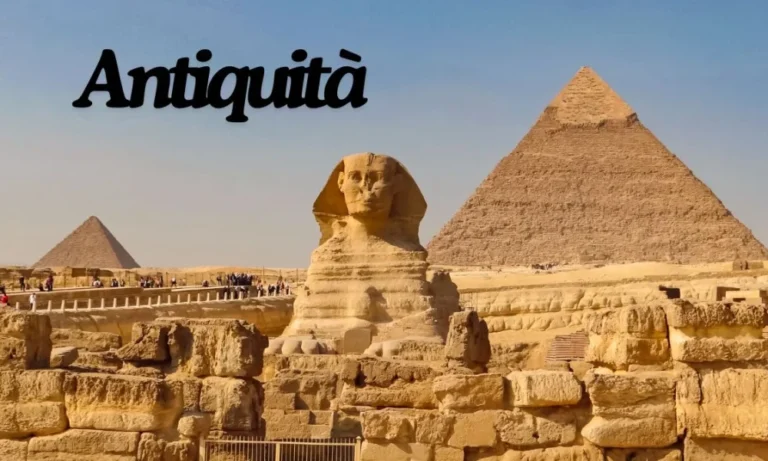Introduction to Antiquità
Antiquità, a time period rooted inside the Latin word “antiquitas,” represents the ancient instances or the remote beyond, specially the length of classical antiquity which includes the civilizations of ancient Greece and Rome. This generation has left an indelible mark on present day society, influencing artwork, subculture, philosophy, and politics. The remnants of antiquità provide a glimpse into the lives, beliefs, and improvements of early civilizations, supplying priceless training and inspirations for modern-day instances.
The Foundations of Western Civilization
The era of antiquità laid the groundwork for Western civilization. Ancient Greece, regularly seemed as the cradle of Western way of life, brought ideas of democracy, philosophy, and drama. Philosophers like Socrates, Plato, and Aristotle explored profound questions about life, ethics, and understanding, forming the basis of Western philosophical concept. The democratic principles mounted in Athens furnished a version for contemporary democratic systems, emphasizing the significance of civic participation and equality before the regulation.
Ancient Rome, succeeding Greece, in addition developed those thoughts, creating a widespread empire that spanned Europe, North Africa, and the Middle East. The Romans excelled in engineering, law, and navy method, constructing extraordinary infrastructures which include aqueducts, roads, and amphitheaters. Roman law, with its emphasis on justice and equity, influenced the criminal systems of many modern-day countries.
Art and Architecture of Antiquità
The artwork and structure of antiquità are celebrated for their splendor, symmetry, and innovation. Greek art, characterised by its emphasis on idealized human paperwork, covered sculptures just like the Venus de Milo and the Discobolus. Greek architecture, exemplified via structures just like the Parthenon, featured using columns and complicated designs which have inspired infinite homes all through records.
Roman artwork and architecture built upon Greek traditions however additionally delivered new techniques and patterns. The Romans pioneered the usage of concrete, permitting the development of massive, durable systems which include the Colosseum and the Pantheon. Roman mosaics, frescoes, and sculptures adorned public spaces and personal homes, reflecting the wealth and sophistication of Roman society.
The Cultural and Intellectual Legacy
The cultural and intellectual legacy of antiquità extends past art and structure. Ancient literature, consisting of epic poems like Homer’s “Iliad” and “Odyssey” and Virgil’s “Aeneid,” has been studied and revered for centuries. These works explore issues of heroism, destiny, and the human circumstance, resonating with audiences across generations.
The ancient Greeks and Romans additionally made significant contributions to technological know-how and medication. Hippocrates, frequently referred to as the “Father of Medicine,” set up standards of scientific ethics and practice which are still applicable these days. In astronomy, figures like Ptolemy mapped the celebs and planets, laying the groundwork for destiny astronomical research.
Influence on Modern Society
The influence of antiquità on contemporary society is profound and pervasive. The Renaissance, a cultural movement that started out within the 14th century, noticed a renewed hobby in classical antiquity. Scholars and artists appeared to ancient Greece and Rome for notion, main to advancements in artwork, literature, and science. This revival of classical understanding and aesthetics considerably fashioned the intellectual and cultural development of Europe.
In present day times, the principles of democracy, justice, and character rights rooted in antiquità continue to underpin contemporary political systems. Classical structure and design elements are familiar in public buildings, museums, and even non-public residences, reflecting the enduring appeal of historic styles. The observe of historical languages, history, and philosophy remains an indispensable a part of instructional curricula, emphasizing the timeless relevance of antiquità.
Preservation and Exploration
Preserving the artifacts and expertise of antiquità is crucial for expertise and appreciating our shared background. Archaeological excavations and research retain to uncover new insights into ancient civilizations. Sites like Pompeii, the Acropolis, and the Roman Forum provide tangible connections to the past, attracting scholars and tourists alike.
Modern technology has revolutionized the observe and upkeep of antiquità. Techniques like 3-D scanning, virtual modeling, and far flung sensing permit for the precise documentation and analysis of historical websites and artifacts. These improvements no longer handiest decorate our know-how of antiquità but also ensure that future generations can experience and study from this wealthy legacy.
Conclusion: The Timeless Appeal of Antiquità
Antiquità, with its profound contributions to art, philosophy, technology, and governance, remains a cornerstone of human civilization. The achievements of ancient Greece and Rome retain to inspire and affect modern-day society, reminding us of the enduring price of expertise, creativity, and cultural change. As we hold and discover the relics of antiquità, we honor the legacy of our ancestors and enhance our information of the human enjoy. The undying attraction of antiquità lies in its ability to attach us with the past, tell the present, and encourage the destiny.
